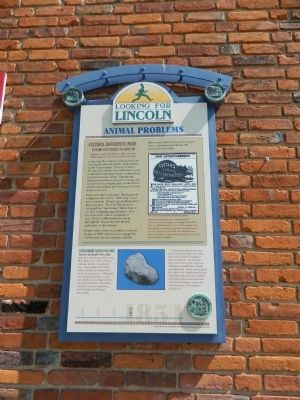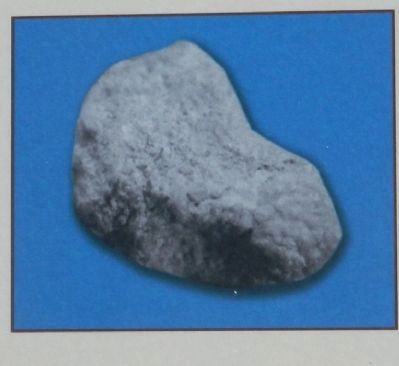Animal Problems
Cultural differences made it hard for citizens to agree on animal control policies. Well into the 1850's hogs freely roamed the streets, contesting the walkways with pedestrians, rooting up sidewalk planks, and creating smelly "how wallows" in front of stores. Attempts by middle-class reformers to pass ordinances requiring owners to keep hogs penned routinely failed. Opponents, usually Southerners and poor immigrants, argued that scavenging pigs cleaned dirty streets and enabled poorer people to raise their own meat.
Dogs were also a nuisance. Roving packs foraged in the streets. "Mad dog" scares were common. People generally ignored licensing laws. The City Marshal was criticized for "murdering" thirty dogs in an 1851 campaign against strays. Yet a few years later others complained that "500 to 1,000 worthless curs in Springfield" threatened the health and safety of the citizens.
Prairie wolves were yet another concern. As late as 1845 citizens were engaged in "wolf hunts" on the outskirts of town. Men on horseback chased the wolves down and dispatched them with strong hickory clubs.
Rats and mosquitoes were consequences of urbanization according to a nostalgic local editor who in 1859 lamented: "It is a little singular that Springfield was never annoyed by the presence of a rat or a mosquito, until after the railroads were built to the place. Now in both respects, the town is becoming quite citified."
Young Robert Lincoln was once bitten by a dog thought to have rabies. Alarmed, Lincoln hurried young Bob all the way to Terre Haute, Indiana, to find a "madstone" that, when applied directly to a bite wound, was supposed to "suck out the poison." Madstones were usually hairballs or rocks formed of calcium deposits from the guts of animals. Regarding Lincoln's belief in madstones, his friend Joseph Gillespie once wrote: "...He had great faith in the strong sense of Country People and he gave them credit for greater intelligence than most men do...He had great faith in the virtues of the mad stone, although he confessed that it looked like superstition. But he said he found the People in the neighborhood of these stones fully impressed with a belief in their virtues from actual experiment and that was about as much as we could ever know of the properties of medicines."
Topics and series. This historical marker is listed in this topic list: Animals. In addition, it is included in the Former U.S. Presidents: #16 Abraham Lincoln, and the Looking for Lincoln series lists. A significant historical year for this entry is 1851.
Location. 39° 47.971′ N, 89° 38.8′ W. Marker is in Springfield, Illinois, in Sangamon County. Marker is
Other nearby markers. At least 8 other markers are within walking distance of this marker. Lincoln's Carriage Maker (within shouting distance of this marker); Republican Wigwams (about 300 feet away, measured in a direct line); Lincoln-Era Fire Companies (about 300 feet away); Florville's Barber Shop (about 300 feet away); The Lyceum (about 400 feet away); The Children's Lincoln (about 400 feet away); Mary Lincoln's Family (about 400 feet away); The American House (about 500 feet away). Touch for a list and map of all markers in Springfield.
Credits. This page was last revised on June 16, 2016. It was originally submitted on July 2, 2012, by Bill Pfingsten of Bel Air, Maryland. This page has been viewed 655 times since then and 5 times this year. Photos: 1, 2. submitted on July 2, 2012, by Bill Pfingsten of Bel Air, Maryland.

